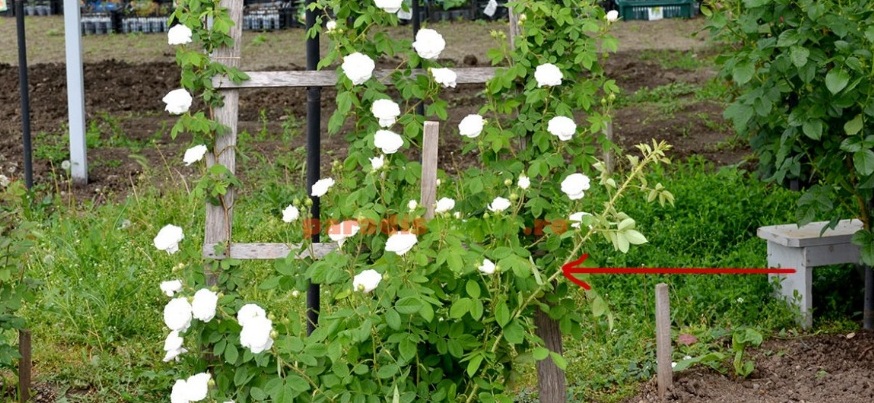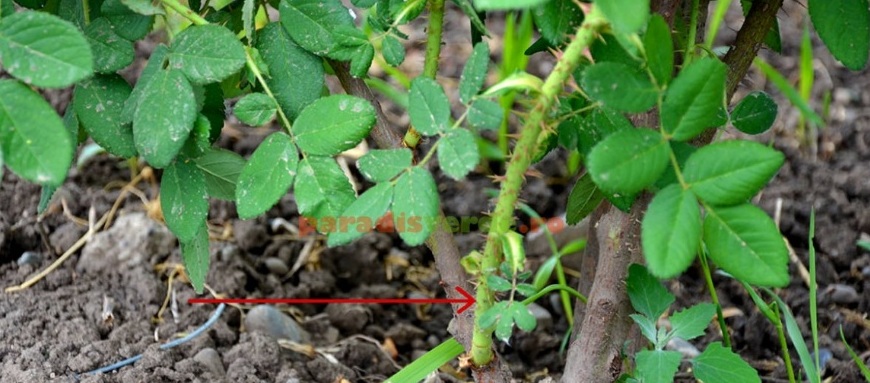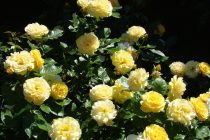Confusing a young branch with a wild one (and vice versa) is a mistake that seriously affect the growth of a climbing rose.
The confusion
1. It usually occurs in some varieties of climbing roses that bloom on old wood (ie starting from the second year).
2. In the first year, the branch is growing, but there are no flowers (they will appear in the next year).
3. For an inexperienced person, the occurrence of a young branch, without flowers, is completely strange and easily mistaken for a wild spring.
4. These young branches don’t need to be pruned, because they contribute in thickening the bush and they increase the flowers volume.
How to recognize a young branch
1. Young branches always grow above the graft, on the main stem or on a secondary stem.
2. Analyze the images below. They present the occurrence of a young branch on the stem. Next year, this branch will be full with flowers, like its neighbors.
The indicated branch is not a wild one.

A young branch always occurs above the graft or on a secondary branch, unlike wild springs which always occur beneath the graft.














0 Comments